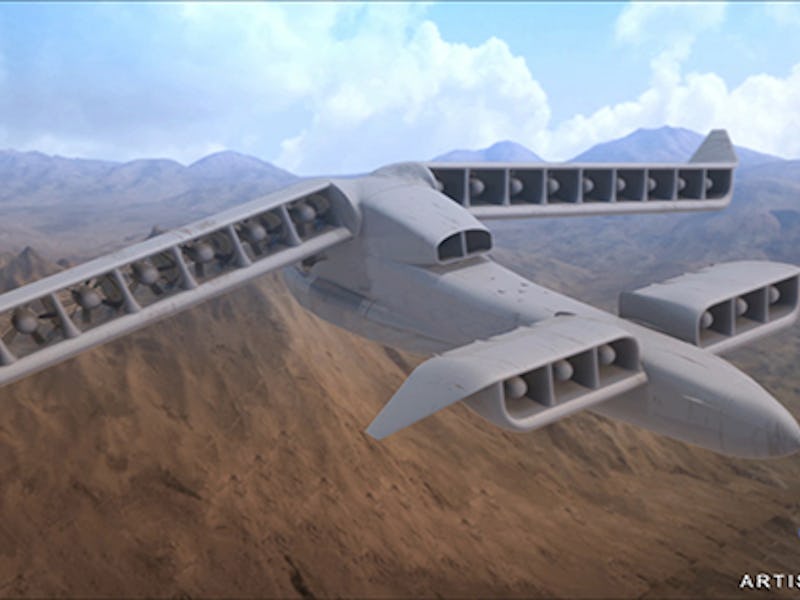DARPA's New Airplane Can Take Off Without a Runway
Vertical takeoff and landing learns some new tricks.

The next generation of U.S. aircraft might be able to land and takeoff anywhere, no runway required.
Having existed in some form since the 1950s, vertical takeoff and landing (VTOL) technology isn’t the newest trick in the book, but VTOL aircraft stand to improve quite a bit in their implementation.
DARPA’s VTOL X-Plane project seeks to stretch the capabilities of such vessels, and in a step forward on existing technology, the governmental research agency has awarded a contract to Aurora Flight Sciences to bring a snappy concept design to life.
By making use of wing and tail sections made almost entirely out of propellers that can rotate toward the ground, this concept design has found “room for invention — truly new elements of engineering and technology that show enormous promise for demonstration on actual flight vehicles,” says Ashish Bagai, DARPA program manager. Now that the next step in the process is to build a working model, there are more than a few challenges afoot.
In order to satisfy the requirements outlined by the VTOL X-Plane program, this concept must achieve a top sustained flight speed of 345 to 460 miles per hour, hover with at least 75 percent efficiency, present a more favorable cruise lift-to-drag ratio of at least 10 where the standard is 5-6, and carry a load of 4,000 to 4,800 pounds. It will fully operate as an unmanned vehicle before ever operating as one with a conventional pilot.
“This VTOL X-plane won’t be in volume production in the next few years but is important for the future capabilities it could enable,” Bagai says in a release. “Imagine electric aircraft that are more quiet, fuel-efficient and adaptable and are capable of runway-independent operations.”
“We want to open up whole new design and mission spaces freed from prior constraints, and enable new VTOL aircraft systems and subsystems.”